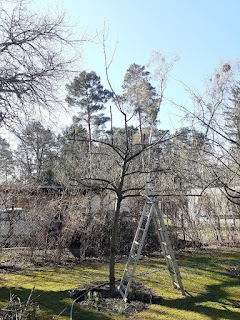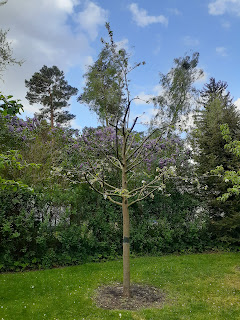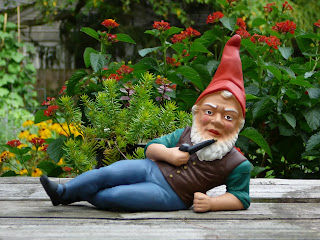It's a Jungle in there
Over the last few years there has been an increase in the popularity of houseplants, not since the swinging 60's & 70's have indoor plants been so popular. A definite surge has occurred with the 20 and 30 somethings taking the leap and owning a plant.
Many factors have led to the increase in popularity. The obvious one is the jump in the social media influence and "influencers" online putting up posts about their new purchase or a carefully placed plant in the background to be noticed by all their adoring followers.
Social media has also helped growers & plant breeders get their plants out and seen. Nurseries and plant re-sellers also have used online advertising to promote sales and creating events to drive the demand. Just add "collectors item" and watch those plant hunters come out.
The other more obvious reasons for the spike in demand is the size of living in the cities. Apartments are the only thing you seem to see being built, their availability and affordability make them attractive to Gen Y. The lack of a garden means both those with green thumbs and those who are looking to put some green amongst the grey have created a demand for house plants once again.
All this said, I have absolutely no problems with this, it's great to see the interest in plant life grow (pun intended). Chuck in a global pandemic and people have had the best opportunity to spend more time doing something they love as well as becoming first time plant parents.
So where do you start? Look there is a million and one platforms online that'll give you an overload of info. So what's the best advise? Check in with your local nursery (no, Bunnings doesn't count) and see what they have to offer. Horticulturalists are great people, passionate and always up for a chat about plants. See what's out there and look for solid, easy to understand advise if you're a beginner.
If you're an old hand at this, look for these so called "collectors items" or the new school plants that are bred to be a bit different (foliage colour/shape, pest resistance) to add tot he collection.
Having lived in apartments the last few years I have tried my hand an indoor plants with some good results. So here are a few old school (and a couple of new kids on the block) plants that have worked well for me and would be a good starting point.
Peace Lily (Spathiphyllum sp.):
These are a staple of many a home or office, not a rare plant by any means but a worthy choice for the beginner. There are a few different species in the market and in more recent times a few new varieties bred for hardiness and flower production. Leaves & flowers can vary in size.
Flowering can also vary depending on the variety. It prefers a protected, well lit spot and likes humidity. So mist the leaves with a spray bottle in between watering the soil. Foliar feeds (liquid fertilisers) van be given the same way.
The Peace Lily also grew in celebrity status after the 1989 NASA research into the best plants species for purifying the air. It was found that Spathiphylum, in particular the 'Mauna Loa' variety, was the best at breathing in and taking out nasty chemicals from the air.
A peaceful demonstration
Devil's Ivy/Pothos (Epiremnum aureum):
This is also a certified Nanna's plant and was displayed with pride just like Grandma's best china. It's a climber native to the French Polynesia area where it normally would scramble up a tree trunk for support via it's aerial root system. This is why it's good to give this guy some support in the form of a bark or coir totem pole. Also works well in hanging baskets and will tolerate very low levels of light
Epipremnum is pretty easy to propagate by cuttings, so if you have a friend with one ask nicely for some cuttings. If you can, get a piece that already has some aerial roots forming.
It also was tested well with air purification in NASA's study. A word of warning, the leaves and stems of Devils's Ivy can be toxic to cats and dogs, so please consider this before purchasing.
The devil is in the detail
Flamingo Flower (Anthurium andraenum):
Another old school favourite that never really went away. This glossy, heart shaped leaf plant from Colombia and Ecuador has a striking red heart spathe (flower petal) with a distinctive elongated white/yellow inflorescence .
The flamingo flower has been a staple of florists and indoor nurseries for decades as it's popularity has never really ever waivered. It prefers a warm but shady position and like the peace lily, enjoys humidity, which helps with it flowering.
It is a recipient of Britain's Royal Horticultural Society's Award of Garden Merit, it's also listed on NASA's list of best air purifying plants and is also toxic to all mammals (multiple themes developing here), so let common sense prevail before throwing the leaves in your next salad.
Syngonium podophyllum 'White Butterfly':
This dainty, clumping foliage plant with arrow shaped leaves, lending to it's common name the Arrowhead Plant. There are many forms of S. podophyllum, ranging in varying leaf size and colour patterns. It's native to a wide range of Latin America, so it does prefer a warmer spot and works well in varying light indoors.
The leaves of 'White Butterfly" generally have distinct leaf patterns with noticeable "veins" which add to it's character. The amount of light can affect leaf variation, in lighter positions the leaf can hold it's lighter, almost white colour better. In darker spots the leaves are generally greener. It is a semi-trailing plant so it can also work well in taller pots or hanging baskets where it's allowed to cascade.
Syngonium podophyllum 'White Butterfly'
Mistletoe Cactus (Rhipsalis sp.):
Doesn't look like a cactus but a pretty easy going and cool plant none the less, once you look a bit closer you'll see how it fits in the cactus family. Another South American native, it also occurs in Central America, Florida and the tropical areas of India and Sri Lanka. They are the only group of cactus to be found outside the New World. The increase of trade between countries helped them spread (as did birds who like the berries).
Rhipsalis is a genus of epiphytic cactus, that is they generally don't rely on soil as most plants to get their water and food but via the atmosphere around them. This means it is important to plant them using a media such as orchid bark to stabilise the plant and use a spray bottle to mist the plant.
Given that most species of Rhipsalis grow with a pendulous or sprawling habit, they work well in taller, tapered pots and hanging baskets. It'll enjoy a warmer, well lit spot, such as a window sill or outside on a balcony.
Rhipsalis sp.
Zanzibar Gem (Zamioculus zalmiofolia):
This tropical plant, native to several areas of Africa, burst onto the plant scene in Australia about two decades ago and was branded as the bullet proof plant that all the "brown" thumbs could keep alive no sweat. It derives its name to the similarity it's foliage structure/shape has to plants in the Cycad and Zamia families.
Dutch production nurseries began to mass produce the Zanzibar Gem in 1996 and it didn't take long to spread across the globe along with it's popularity with plant collectors. It is just as popular today due to it's ease of care, it structural habit and glossy, succulent stems and leaves. Leaves rise up from a strong underground rhizome,
Leaves reach about 50-60cm long and form clumps as the plant develops. Their leaves are made up of 90% water and is a reason why they can survive long periods of dry. Zamioculus will become deciduous when in drought, shedding it's leaves and storing moisture in the underground rhizomes.
Over watering is the most common reason for declining plant quality, so find a bright spot in the home, out of direct light and water sparingly.
A real gem in the home
Some other old school favourites are listed below.
Top Left: Mixed succulent & cactus planters for those with a sunny, warm spot. Top Right: Mother in Law's Tongue (Sansevieria sp. also now know as Dracaena sp.).
Middle Left: Spider or Ribbon Plant (Chlorophytum comosum). Middle Right: Ferns are great for a darker space with no direct light. Try the Boston or Fishbone Ferns or natives such as Birds Nest or Maiden Hair Fern.
Bottom Left: The tough and structural Dracaena marginata looks great in a pot. Bottom Right: Cast Iron Plant (Aspidistra elatior) as the name suggests is a tough bugger.
It's great to see so many people dip their toes into the world of indoor gardening, it's the kind of panic buying that I'd like to see continuing, who needs toilet paper when you have leaves?!
A few things to remember before buying your first house plant. There isn't really such a thing as an indoor plant, they all happily grow outdoors in different parts of the world, us humans just try to alter their lifestyles to suit ours.
So when researching your next plant purchase for your house, look at where they normally grow in the world, 9/10 times it will be somewhere tropical with high humidity and high rainfall. So with this in mind find spots in the house that mimic this or can be adapted to provide these requirements. A well lit bathroom is ideal for many of the plants listed above.
Don't over water, in most cases plants will be fine if left to dry out slightly between watering. So observe and act when required. Use saucers to limit spills and stains on your flooring. A good idea is to put a layer of pebbles or gravel under the pot (in the saucer) so the roots don't sit in water and it also helps create humidity.
Fertilise sparingly, unless it's a plant that flowers often. Use a specific houseplant fertilise at the rate suggested, these are usually formulated with higher nutrients to promote leafy growth and for plants in low light situations. Fertilisers can also be applied my misting the leaves with a spray bottle at a more diluted rate.
Wash their hands! I mean leaves, if we have learnt anything from COVID-19 it is that hygiene is very important, even for plants. Plants breathe through their leaves and if they get dirty and dusty it can cause poor transpiration rates and lead to poor plant health. Clean them regularly either with a damp cloth or using a horticultural spray, these sprays add shine to your plants leaves and also protection from nasty pests.
Now that you are giving a plant protection from the elements and warm, pests will find that inviting too. Leafy plants make ideal hiding spots for insects such as scale, aphids and mealy bug. So when your cleaning the leaves, dig a bit deeper and keep an eye out for these pests - it doesn't take long for them to build up in numbers. Remove by hand if possible or use a natural or eco-friendly chemical to manage these pesky buggers.
The health benefits of having plants is amazing. Not only does it give one a sense of nurturing by giving you a sense of purpose and responsibility to a life, there are also numerous health benefits to gardening. Aside from the physical benefits that are more tied to outdoor gardening, the mental health and not so seen or felt physical benefits to indoor gardening are just as rewarding and important.
So while things are getting back to normal, many of us are still working from home, if your office at work is green, why not bring some of that "normality" to your home office. If not, what a great time to start improving your plant/life balance.
The new normal may just mean that you have to become that "crazy plant person"!



















































